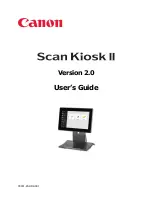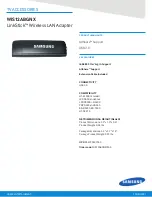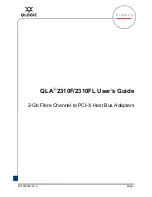
1-4
Cisco Aironet Wireless LAN Client Adapters Installation and Configuration Guide for Windows CE
OL-1375-03
Chapter 1 Product Overview
Software Components
Software Components
The client adapter has three major software components: radio firmware, a driver, and client utilities.
Radio Firmware
The firmware, which is contained in the client adapter’s Flash memory, controls the adapter’s radio. The
client adapter is shipped with the firmware installed; however, a more recent version of the firmware may
be available from Cisco.com.
Note
Firmware version 5.02.19 or greater is recommended for use with client adapter driver and utility
version 2.30.
provides instructions for determining the version of your client adapter’s
firmware and upgrading it if necessary.
Driver
The driver provides an interface between the Windows CE device and the client adapter, thereby enabling
Windows CE and the applications it runs to communicate with the adapter. The driver must be installed
before the adapter can be used.
provides instructions for installing the driver.
Client Utilities
Two client utilities are available for use with Cisco Aironet client adapters: Aironet Client Utility (ACU)
and Wireless Login Module (WLM). These utilities are optional applications that interact with the radio
firmware to adjust client adapter settings and display information about the adapter. The client utilities
and online help files are installed with the driver.
ACU enables you to create configuration profiles for your client adapter and perform user-level
diagnostics. Because ACU performs a variety of functions, it is documented by function throughout this
manual. However, an overview of the utility is provided on the next page to familiarize you with its
interface. WLM enables you to enter a temporary LEAP username and password for authentication to a
RADIUS server.
provides detailed information and instructions on using WLM.
Note
If your Windows CE device is running Windows CE .NET, you can configure your client adapter
through the operating system instead of through ACU. Refer to
for information.
However, ACU is recommended for configuring the client adapter.
Note
All of the screens included in this manual were taken from a PPC 2002 device (except those in
Appendix E, which were taken from a Windows CE .NET device). The screens look slightly different
on other Windows CE devices.
















































